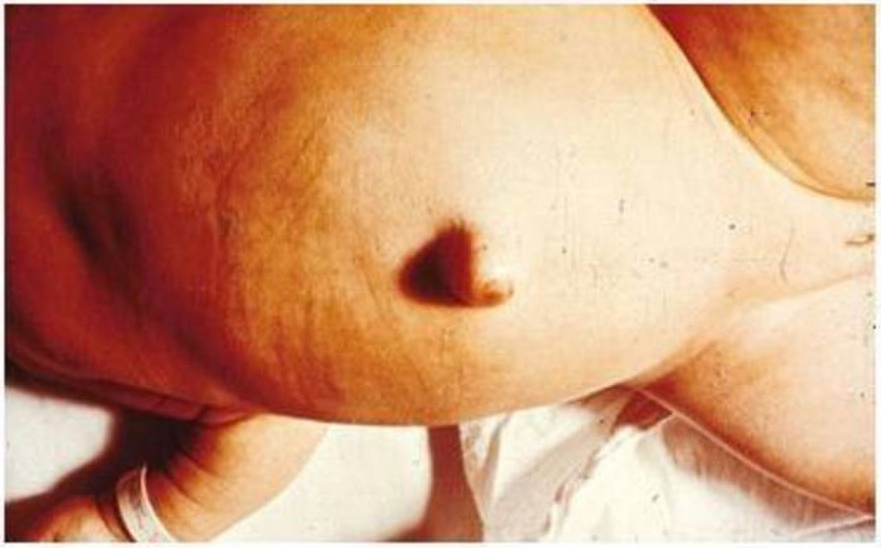Cretinism physical examination
Jump to navigation
Jump to search
|
Cretinism Microchapters |
|
Diagnosis |
|---|
|
Treatment |
|
Case Studies |
|
Cretinism physical examination On the Web |
|
American Roentgen Ray Society Images of Cretinism physical examination |
|
Risk calculators and risk factors for Cretinism physical examination |
Editor-In-Chief: C. Michael Gibson, M.S., M.D. [1]; Associate Editor(s)-in-Chief: Ahmed Elsaiey, MBBCH [2]
Overview
Patients with cretinism usually appear asymptomatic at the beginning of the disease. Physical examination of patients with cretinism is usually remarkable for jaundice, dry skin, large fontanelles, macroglossia, umbilical hernia, bradycardia, delayed puberty, and hypotonia.
Physical Examination
Appearance of the Patient
- Patients with cretinism usually appear asymptomatic at the beginning[1]
Vital Signs
Skin
HEENT
Neck
Heart
Abdomen

Genitourinary
- Delayed puberty in the children
- In severe cases, it can cause pseudo precocious puberty:[2]
Neuromuscular
Extremities
References
- ↑ Law WY, Bradley DM, Lazarus JH, John R, Gregory JW (1998). "Congenital hypothyroidism in Wales (1982-1993): demographic features, clinical presentation and effects on early neurodevelopment". Clin Endocrinol (Oxf). 48 (2): 201–7. PMID 9579233.
- ↑ Anasti JN, Flack MR, Froehlich J, Nelson LM, Nisula BC (1995). "A potential novel mechanism for precocious puberty in juvenile hypothyroidism". J Clin Endocrinol Metab. 80 (1): 276–9. doi:10.1210/jcem.80.1.7829625. PMID 7829625.